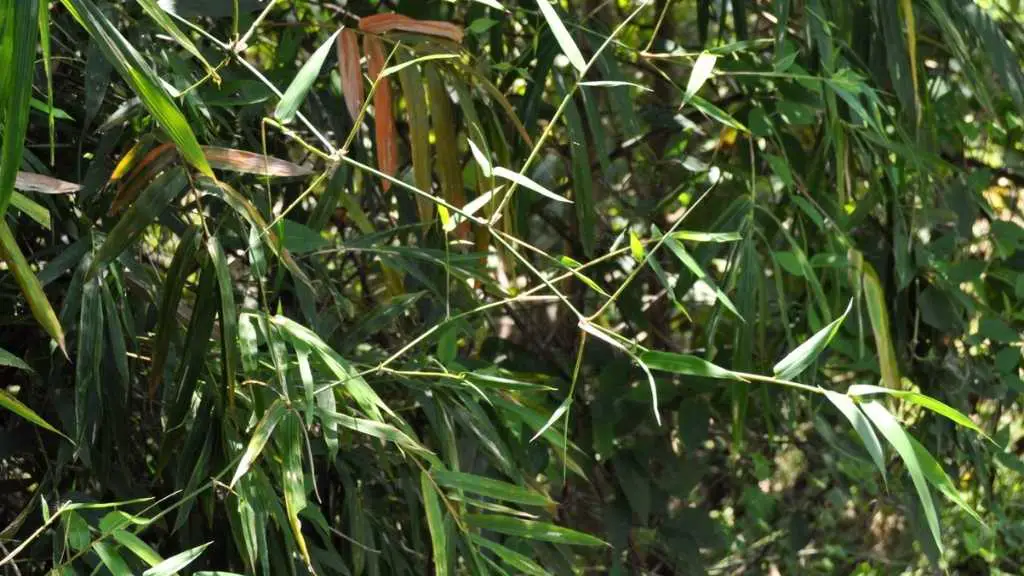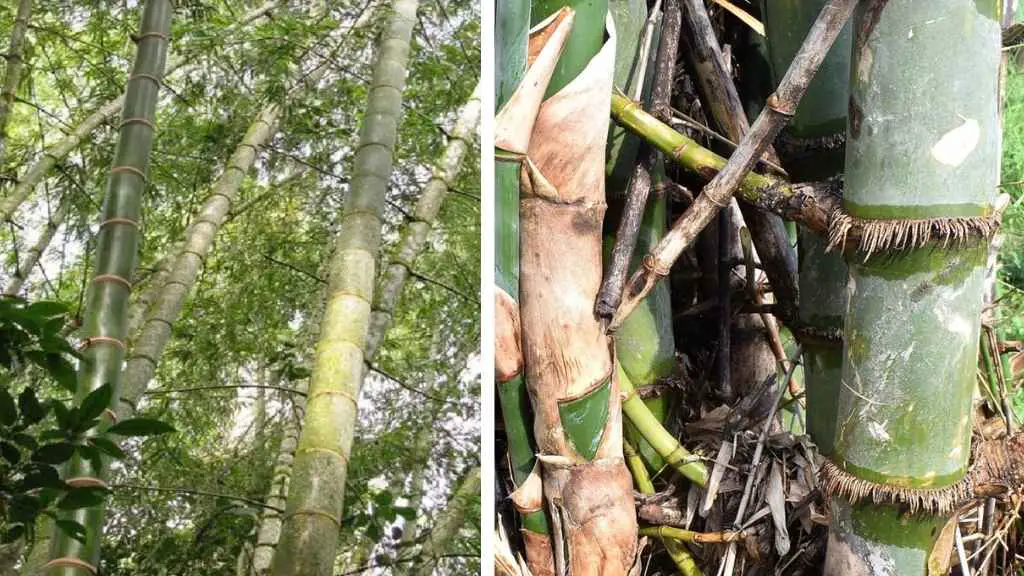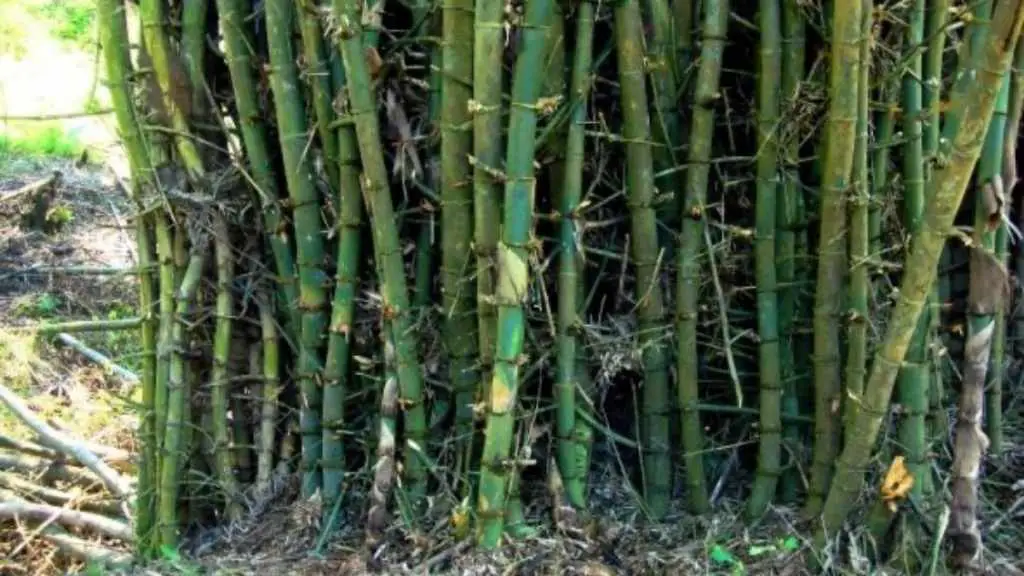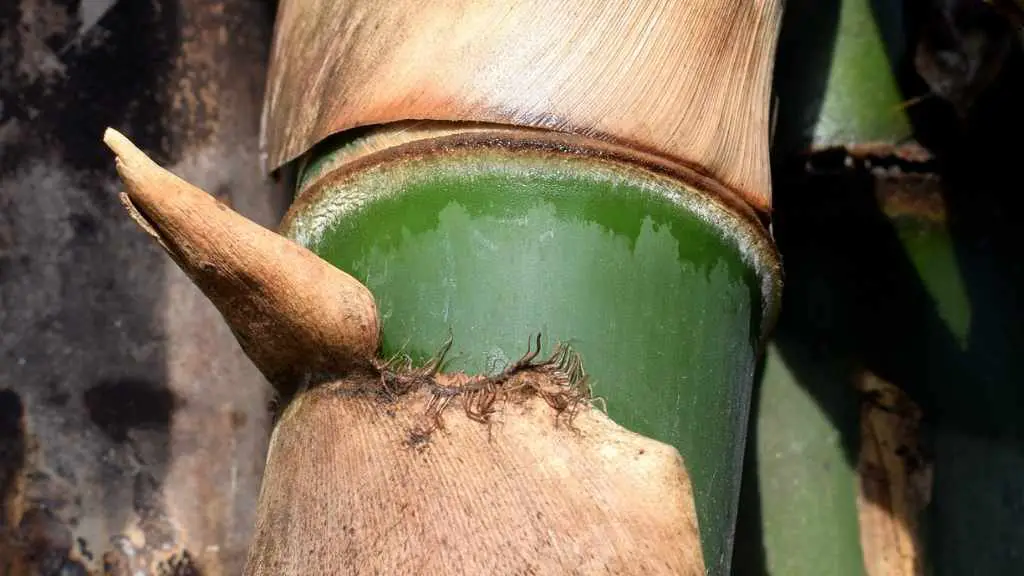The bamboo family is filled with spectacular and alluring specimens. Temple Bamboo, Chocolate Bamboo, and Japanese Timber Bamboo are just a few of the more intriguing varieties. And then there’s Thorny Bamboo. If you’re looking to enhance your Feng Shui, this might not sound like the most agreeable option. Indeed, Thorny Bamboo is not a prime choice of ornamental species, but it does have other redeeming qualities.
Thorny Bamboo, or Bambusa blumeana, is a tropical, clumping bamboo species native to Indonesia but now widespread throughout Southeast Asia and the Philippines as well as southern China and Japan. Growing 40 to 70 feet tall with thick culms, it’s a high-quality bamboo for building and construction. But the spiny thorns make it somewhat difficult to work with. Thorny Bamboo can also refer to Bambusa stenostachya or Bambusa bambos.
This article is part of an ongoing series about different species and cultivars of bamboo. To learn more, check out some of these other in-depth articles.
- BAMBOO SPECIES GUIDE
- A gallery of bamboo species
- Black Bamboo: Phyllostachys nigra and others
- Buddha’s Belly Bamboo
- Chimonobambusa quadrangularis: Square Bamboo
- Golden Bamboo: Phyllostachys aurea and others
- Hiroshima Bamboo
- Pseudosasa amabilis: Tonkin Bamboo
- Purple Bamboo: An online phenomenon
Distribution of Bambusa blumeana
Bambusa blumeana is probably native to Malaysia or Indonesia. Today it grows widely throughout Southeast Asia. In Vietnam, they commonly refer to this bamboo as ‘tre gai’, and in Laos, they call it ‘mai phai’. The species has also been introduced to other parts of Asia and Africa for commercial cultivation. Some authors now list it as Bambusa spinosa, meaning spiny bamboo.
As with many naming conventions, there is some disagreement about whether the Vietnamese ‘tre gai’ is actually Bambusa blumeana or Bambusa stenostachya. And some experts consider these all to be different names for the same species.

This is a tropical species and it will not tolerate climates with frosty winters. Like most tropical varieties and all members of the genus Bambusa, this is a clumping bamboo. It has not been adopted as an ornamental species, partly because of its tropical habitat but also on account of its thorny disposition.
Characteristics of Thorny Bamboo
A tropical timber bamboo, Bambusa blumeana will usually grow more than 50 feet tall in its native habitat. Its mature culms can get 4 to 6 inches in diameter. The species prefers moist conditions, but it can survive periods of drought.
As the name Thorny Bamboo or Spiny Bamboo would imply, Bambusa blumeana has protruding thorns that grow up out of the culm nodes. The nodes also produce multiple branches, sometimes with a single dominant branch, but equally often with two or three major branches. In addition to the dominant branch(es), there will be many smaller, subordinate branches, as well. The result is something of a tangled mess of thorns and branches, not nearly as attractive as other tropical species like Dendrocalamus giganteus or Bambusa oldhamii.
Rough and thorny
Alongside the protruding thorns and multiple branches, the nodal joints often have a ring of aerial roots. As shown in the photo below, these create a rough and bushy aspect. Other species, such as Dendroclamus asper, also have these furry patches around the node joints, which is why Asper is sometimes called “rough bamboo”.
While not the most elegant and appealing bamboo for the position of its culms and arrangement of its branches, Thorny Bamboo is quite impressive for its size. A mature clump will typically produce culms that are 40 to 70 feet tall, depending on the availability of water and other environmental factors.
Uses for Bambusa blumeana
Culms can grow 4 to 6 inches in diameter, and they have relatively thick walls, making them ideal for building and light construction. At the base of the plant, the culms can be nearly solid. As with other bamboo varieties, like Dendrocalamus strictus, dry conditions will result in thicker culm walls. Such thick and sturdy poles are strong and suitable for building. This bamboo also has plentiful biomass for making products like paper or biofuel.

Furthermore, B. blumeana is more tolerant of saturated soils and flooding than most other bamboo species. This makes it an excellent candidate for erosion control and land restoration around waterways and areas vulnerable to flooding and landslides.
Thorny Bamboo also has culinary value. This robust species flourishes throughout Southeast Asia and is prized for its edible shoots, a readily available source of nutrition. In Vietnam, they commonly collect the leaves to make bamboo tea.
But when it comes to cultivating bamboo, most farmers prefer other species with smoother culms that are easier to harvest and handle. So B. blumeana is not as widely grown or studied as Moso or Asper. But in 2022, researchers in the Philippines completed a comprehensive study measuring the comparative size and quality of different sections of Thorny Bamboo culms. It was an important project for establishing the best practices and criteria for grading commercial bamboo.
Because it’s very drought-tolerant, conservationists are also planting this species around the southern boundaries of the Sahara to protect the sensitive savannah regions again the expansion of the desert.
Bambusa bambos or Indian Thorny Bamboo
The world of bamboo nomenclature is filled will confusion and contradictions. Names like Golden Bamboo, Black Bamboo, and Giant Bamboo may sound specific, but they can refer to a great number of different species. Thorny Bamboo, or Spiny Bamboo, is another example of that.
Thorny Bamboo usually means Bambusa blumeana, but this isn’t the only bamboo species with thorns. The name might also refer to Bambusa bambos, which can also go by Indian Thorny Bamboo or even Giant Thorny Bamboo. The botanical name is something like a reiteration of the Indian word for bamboo.
If you know what region you’re dealing with, that might help you determine which exact species of Thorny Bamboo you’re looking at. But don’t be so sure. Indian Thorny Bamboo is prolific in Southeast Asia. And until recently, this species was known as Bambusa arundinacea. Like I said, it can get confusing.
Characteristics of Bambusa bambos
B. bambos is comparable in size to B. blumeana, growing 40 to 70 feet tall with 4 to 6-inch culm diameters. Culm walls are thick and some poles are nearly solid. The canes have a dark green color and the leaves are long and large. The poles are not as straight as other timber bamboos, but their size and strength make them valuable for biomass, crafts, and light construction. It also has edible shoots.

Thorns and abundant branches create a dense and nearly impenetrable thicket. Indian Thorny Bamboo prefers tropical conditions and moist soil. It grows widely throughout Southeast Asia and is especially common in the forests of India. B. bambos can also tolerate more salinity than other bamboo species.
Bambusa stenostachya
Another species of thorny bamboo, many identify Bambusa stenostachya as the popular Vietnamese ‘tre gai’. The level of confusion proves how difficult it can be to differentiate between bamboo varieties.
Is it a different species or just the result of different growing conditions? In any case, it’s not clear to me what the differences are between B. blumeana and B. stenostachya. Other authors say these two species are one and the same.
In Vietnam, the lower parts of ‘tre gai’ culms are nearly solid and widely used for furniture making. The species has recently been introduced to the US for possible commercial value. Ornamentally, it is of little interest.
Thorny bamboo of South America
In South America, there are also a number of thorny bamboo species in the genus Guadua, including the illustrious G. angustifolia. But there are also subspecies of angustifolia that have no thorns.
Learn more
The world of bamboo can be confusing and filled with thorny questions. But if you’re looking for straight facts and reliable answers, you’ve come to the right place. Take a look at some of these other in-depth and insightful articles to expand your understanding of this remarkable subfamily of grasses.
- Myths and misconceptions about bamboo
- Troubleshooting tips with bamboo
- Bamboo anatomy
- Best bamboo species for farming
PHOTO CREDITS: Wibowo Djatmiko (Wikicommons)


























Great content 👌